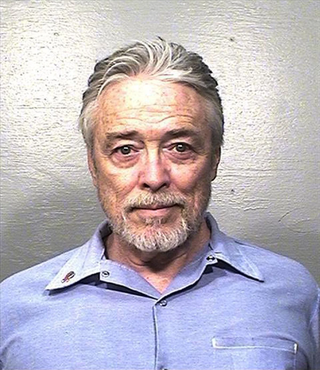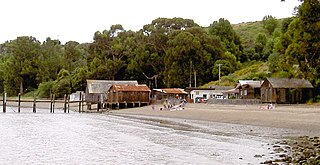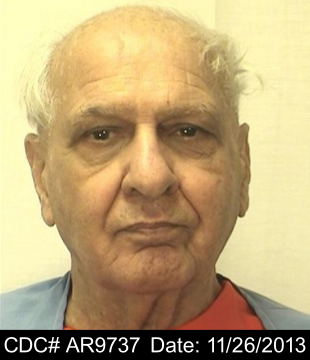The Cleveland Elementary School shooting was a school shooting that took place on January 29, 1979, at Grover Cleveland Elementary School in San Diego, California, United States. The principal and a custodian were killed; eight children and police officer Robert Robb were injured. A 16-year-old girl, Brenda Spencer, who lived in a house across the street from the school, was convicted of the shootings. Charged as an adult, she pleaded guilty to two counts of murder and assault with a deadly weapon, resulting in her being sentenced to life in prison with a chance of parole after 25 years. As of 2023, she is still in prison.

Diane Alexis Whipple was an American lacrosse player and college coach. She was killed in a dog attack in San Francisco on January 26, 2001. The dogs involved were two Presa Canarios. Paul Schneider, the dogs' owner, is a high-ranking member of the Aryan Brotherhood and is serving three life sentences in state prison. The dogs were looked after by Schneider's attorneys, Robert Noel and Marjorie Knoller, a husband and wife who lived in the same apartment building as Whipple. After the fatal attack, the state brought criminal charges against the attorneys. Noel, who was not present during the attack, was convicted of manslaughter. Knoller, who was present, was charged with implied-malice second-degree murder and convicted by the jury. Knoller's murder conviction, an unusual result for an unintended dog attack, was rejected by the trial judge but ultimately upheld. The case clarified the meaning of implied malice murder.

Patricia Dianne Krenwinkel is an American convicted murderer and former member of the Manson Family. During her time with Manson's group, she was known by various aliases such as Big Patty, Yellow, Marnie Reeves and Mary Ann Scott, but to The Family, she was most commonly known as Katie.

Susan Denise Atkins was an American convicted murderer who was a member of Charles Manson's "Family". Manson's followers committed a series of nine murders at four locations in California over a period of five weeks in the summer of 1969. Known within the Manson family as Sadie Mae Glutz or Sexy Sadie, Atkins was convicted for her participation in eight of these killings, including the most notorious, the Tate murders in 1969. She was sentenced to death, which was subsequently commuted to life imprisonment when the California Supreme Court invalidated all death sentences issued prior to 1972. Atkins was incarcerated until her death in 2009. At the time of her death, she was California's longest-serving female inmate, long since surpassed by fellow Manson family members Leslie Van Houten and Patricia Krenwinkel.
A thrill killing is premeditated or random murder that is motivated by the sheer excitement of the act. While there have been attempts to categorize multiple murders, such as identifying "thrill killing" as a type of "hedonistic mass killing", actual details of events frequently overlap category definitions making attempts at such distinctions problematic.

The Mexican Mafia, also known as La eMe, is a Mexican American criminal organization in the United States. Despite its name, the Mexican Mafia did not originate in Mexico, and is entirely a U.S. criminal prison organization. Law enforcement officials report that the Mexican Mafia is the deadliest and most powerful gang within the California prison system.

Matricide is the act of killing one's own mother.

Robert Kenneth Beausoleil is an American murderer and associate of Charles Manson and members of his communal Manson Family. He was convicted and sentenced to death for the July 27, 1969, fatal stabbing of Gary Hinman, who had befriended him and other Manson associates. Beausoleil was later granted commutation to a lesser sentence of life imprisonment, after the Supreme Court of California issued a ruling that invalidated all death sentences issued in California prior to 1972.

Donald Jay Beardslee was an American serial killer who murdered three women. While on parole for killing a woman in Missouri in 1969, Beardslee murdered two more women in California. He was sentenced to death and executed by lethal injection in San Quentin State Prison in 2005.

Jeremy Strohmeyer is an American convicted murderer, serving four consecutive life terms for the sexual assault and murder of 7-year-old Sherrice Iverson at Primadonna Resort and Casino in Primm, Nevada, on May 25, 1997.

China Camp State Park is a state park in Marin County, California, surrounding a historic Chinese American shrimp-fishing village and a salt marsh. The park is located in San Rafael, California, on the shore of San Pablo Bay. It is known for its hiking and mountain biking trails, scenic views, and open spaces. The 1,514-acre (613 ha) park was established in 1976. A 75-acre (30 ha) district, including the shrimping village and a prehistoric shell midden, were added to the National Register of Historic Places in 1979 for having state-level significance in archaeology, architecture, commerce, settlement, and social history. China Camp State Park, along with the Rush Ranch Open Space Preserve, is part of the San Francisco Bay National Estuarine Research Reserve.

Terra Linda is a district of the city of San Rafael, California. It was formerly an unincorporated community within Marin County. It lies at an elevation of 171 feet.

Edward Sapiano was a Canadian defence lawyer, based in Toronto, Ontario, notable for his role in many high-profile criminal cases. He initiated Canada's largest criminal investigation of police, resulting in the arrest and prosecution of several Toronto police officers and was also involved in the so-called Toronto 18 terrorism trial. Edward Sapiano is also noted for demanding immediate DNA testing of his client shortly following the 1996 arrest of the suspected "North York serial rapist", leading to his client Jeremy Foster's full vindication, despite a false confession to the crime. In his quest to get illegal guns off the street, Sapiano also created the only lawyer-operated gun amnesty program available in North America, Piece Options. He is also known for starting a database of rulings and judgements to track alleged misconduct among Toronto-area officers which was then retrievable for cross-examinations in other cases by other lawyers. Edward Sapiano, after putting his practice on hold for two and a half years due to kidney failure, returned to court in 2017 for the Andrea White murder trial. Edward died on March 21, 2020, from complications of kidney disease and was cited to be the first lawyer in Canada to practise while undergoing 10 hours of daily dialysis. He was regularly featured by media outlets, including The Globe and Mail, CBC, and the New York Times commenting on criminal law issues.

The Wineville Chicken Coop murders, also known as the Wineville Chicken murders, were a series of abductions and murders of young boys that occurred in the city of Los Angeles and in Riverside County, California between 1926 and 1928. The murders were carried out by Gordon Stewart Northcott, a 19-year-old farmer who had moved to California from Canada two years prior, as well as his mother, Sarah Louise Northcott, and his nephew, Sanford Clark.

Jason Keel Sweeney was a construction worker from Fishtown, Philadelphia, Pennsylvania, who at the age of 16 was murdered by four teenagers for his paycheck on May 30, 2003. The perpetrators included a girl he was dating and his best friend since childhood. Due to the manner in which Sweeney was murdered, the ages of the teens involved, and the seeming indifference of the perpetrators, the crime received national media coverage.

On Death Row is a television mini-series written and directed by Werner Herzog about capital punishment in the United States. The series grew out of the same project which produced Herzog's documentary film Into the Abyss. The series first aired in the United Kingdom on March 22, 2012, on Channel 4.
Agnès Marin was a 13-year-old girl who was raped and murdered on 16 November 2011 in Le Chambon-sur-Lignon, Haute-Loire, France. The murder was committed by 17-year-old Mathieu Moulinas, a student at the same school who at the time was on parole while awaiting trial for rape of another girl.

Joseph Naso, also known as Crazy Joe or the Double Initial Killer, is an American serial killer and serial rapist sentenced to death for the murders of four women. He was also implicated in the murders of other women.

Jennifer Pan is a Canadian woman who was convicted of a 2010 kill-for-hire attack targeting both of her parents, killing her mother and injuring her father. The crime took place at the Pan residence in Unionville, Markham, Ontario, in the Greater Toronto Area. Pan was found guilty on multiple charges and sentenced to life imprisonment with the possibility of parole after 25 years, the same penalty as her co-conspirators. In May 2023, the Court of Appeal for Ontario ordered a retrial for Pan and her conspirators on the first-degree murder charge but upheld the attempted murder conviction.
On July 16, 2011, in Port St. Lucie, Florida, Blake Hadley, 54, and Mary-Jo Hadley, 47, were murdered by Tyler Hadley, their 17-year-old son. Three years later, he was convicted of the murder, and sentenced to life in prison.


















